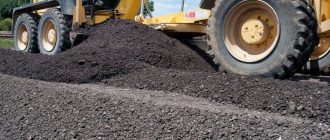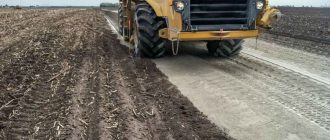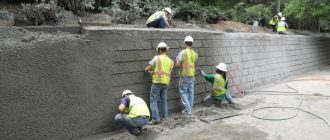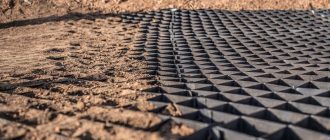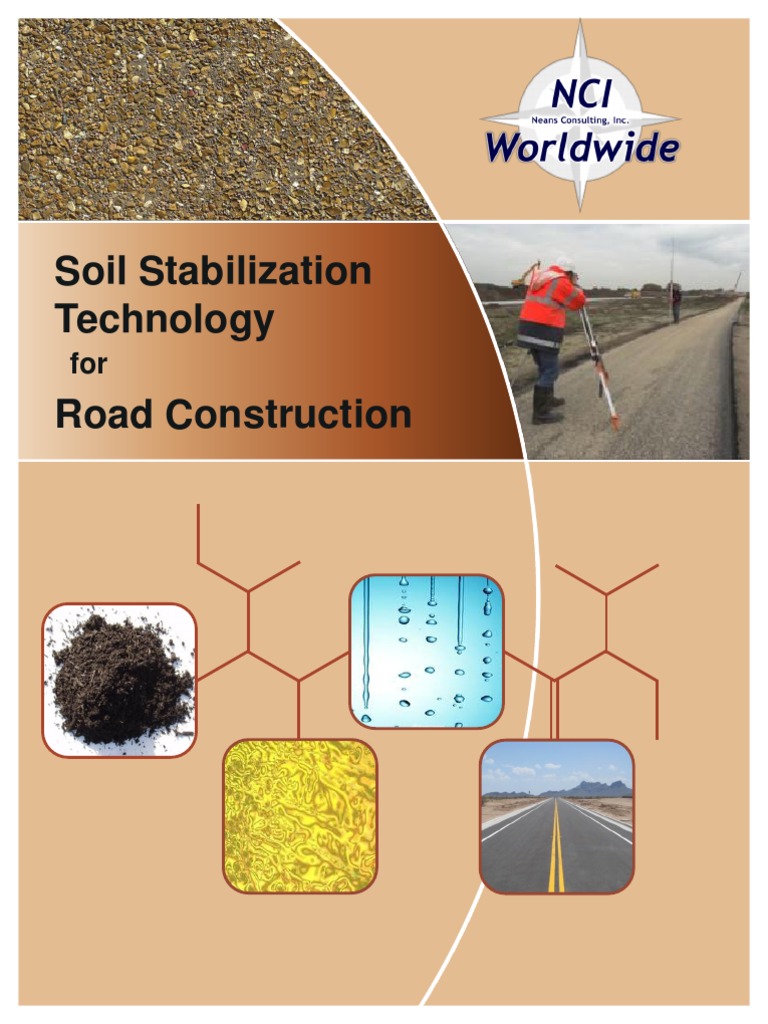
Benefits of Soil Stabilization for Construction Projects
Soil stabilization is a crucial process in construction projects that offers numerous benefits. By improving stability and cost-efficiency, it plays a vital role in ensuring the success of any construction endeavor.
Improved Stability:
One of the key advantages of soil stabilization is its ability to enhance the stability of the ground. By treating the soil with stabilizing agents, such as lime or cement, the soil’s bearing capacity and load-bearing capabilities can be significantly improved. This ensures a solid foundation for construction, reducing the risk of settlement and structural failures.
Cost Efficiency:
Soil stabilization can also contribute to cost-efficiency in construction projects. By strengthening the soil, it minimizes the need for excessive excavation and replacement of unstable soil, resulting in reduced construction costs. Additionally, stabilizing the soil can prevent future maintenance issues and repairs, saving money in the long run.
Stabilizing the soil during the construction phase can lead to substantial cost savings and improved project timelines.
Overall, soil stabilization offers significant benefits to construction projects. It enhances stability, reduces costs, and ensures the long-term integrity of structures. Incorporating soil stabilization techniques into construction plans is a wise investment, guaranteeing the success and longevity of any construction project.
Benefits of Soil Stabilization for Construction Projects
Soil stabilization is a critical process in construction projects that involves improving the stability and cost-efficiency of the soil used in building foundations. By stabilizing the soil, construction professionals can ensure that their projects are built on a solid and secure foundation, minimizing the risk of settlement and structural damage.
There are numerous benefits to implementing soil stabilization techniques in construction projects:
| 1. Enhanced Stability: | Soil stabilization improves the stability of the soil, making it more resistant to erosion and reducing the risk of landslides. This is particularly important in areas with poor soil conditions or steep slopes. |
| 2. Increased Load-bearing Capacity: | Stabilized soil has a higher load-bearing capacity, allowing it to support heavier structures and equipment. This is essential in construction projects where substantial loads need to be carried, such as highways, bridges, and industrial facilities. |
| 3. Cost-efficiency: | By stabilizing the soil, construction projects can reduce the need for extensive excavation and replacement of unsuitable soil, thus saving time and money. Soil stabilization techniques allow for the use of on-site soil, minimizing the need for importing costly fill materials. |
| 4. Environmental Sustainability: | Soil stabilization can be an environmentally sustainable choice for construction projects. By utilizing on-site soil instead of importing materials, it reduces the carbon footprint associated with transportation, lowers landfill waste, and limits the extraction of natural resources. |
| 5. Long-term Durability: | By stabilizing the soil, construction projects can ensure the long-term durability of the structures. Stabilized soil is less susceptible to settling and shifting, minimizing the risk of structural damage over time and reducing the need for costly repairs and maintenance. |
In summary, soil stabilization is a crucial process in construction projects, providing multiple benefits such as enhanced stability, increased load-bearing capacity, cost-efficiency, environmental sustainability, and long-term durability. By employing soil stabilization techniques, construction professionals can ensure the success and longevity of their projects.
Improved Stability
Soil stabilization is an essential process in construction projects to ensure the stability of the soil on which the structure is built. Unstable soil can compromise the structural integrity of buildings and infrastructure, leading to expensive repairs and potential safety hazards.
Through soil stabilization techniques, such as compaction, chemical treatment, and mechanical reinforcement, the soil’s properties can be enhanced to provide improved stability. Compaction involves using heavy machinery to compress the soil, increasing its density and reducing its susceptibility to settling or shifting.
Chemical treatment involves the use of specialized additives that can chemically alter the soil, improving its load-bearing capacity and reducing its susceptibility to erosion or water infiltration. These additives bind the soil particles together, creating a more stable and cohesive foundation.
Mechanical reinforcement techniques, such as the installation of retaining walls or geotextiles, can also be utilized to stabilize soil in construction projects. These reinforcements provide additional support and prevent soil movement, ensuring the long-term stability of the structure.
| 1. Increased safety for construction workers and occupants of the structure. |
| 2. Prevention of soil erosion, settling, or shifting, minimizing the need for future repairs. |
| 3. Cost savings by avoiding costly foundation repairs or reconstruction. |
| 4. Enhanced durability and longevity of the structure. |
By investing in soil stabilization techniques, construction projects can ensure improved stability, reduce the risk of structural failure, and save costs in the long run.
Increased Load-bearing Capacity
One of the key benefits of soil stabilization for construction projects is the increased load-bearing capacity it provides. When the soil is stabilized, it becomes stronger and more resistant to compression, allowing it to support heavier loads with ease.
This increased load-bearing capacity is particularly important in construction projects where heavy machinery or equipment needs to be used. By stabilizing the soil, construction companies can ensure that the ground can safely support the weight of these machines, minimizing the risk of soil settlement and structural damage.
With increased load-bearing capacity, construction projects can be completed more efficiently and cost-effectively. Stabilizing the soil eliminates the need for expensive structural reinforcements, such as deep foundations or earthworks, as the stabilized soil can provide the necessary support on its own.
Furthermore, by increasing the load-bearing capacity of the soil, construction projects can be carried out in areas with poor soil conditions. Previously unstable or weak soils can be made suitable for construction, opening up new areas for development and reducing the need for expensive land acquisition.
In conclusion, soil stabilization brings numerous benefits to construction projects, including increased load-bearing capacity. By strengthening the soil, construction companies can ensure the stability and cost-efficiency of their projects, while also expanding the possibilities for construction in challenging soil conditions.
Enhanced Durability
Soil stabilization is not only beneficial for improving stability and cost-efficiency in construction projects, but it also enhances durability. By stabilizing the soil, construction projects can achieve increased durability, which is essential for ensuring the long-term success and functionality of structures.
Soil stabilization helps to mitigate issues such as soil erosion, settling, and shrinkage, which can significantly impact the durability of construction projects. These problems can lead to structural damage, decreased lifespan, and costly repairs.
By implementing soil stabilization techniques, construction projects can enhance the durability of the soil, providing a solid foundation that can withstand the effects of natural elements, heavy loads, and other external factors. This results in structures that remain stable and intact for extended periods, reducing the need for frequent maintenance or premature replacements.
The enhanced durability achieved through soil stabilization not only benefits the immediate construction project but also ensures long-term cost savings. With a more durable foundation, structures are less prone to damage and degradation, reducing the need for costly repairs and replacements in the future.
| Improve Stability |
| Cost-efficiency |
| Enhanced Durability |
Reduced Maintenance
One of the key benefits of soil stabilization for construction projects is the reduced maintenance required. By stabilizing the soil, you can significantly decrease the need for ongoing repairs and maintenance work.
Soil stabilization strengthens the soil and improves its ability to withstand the pressures and stresses of construction activities. This results in a more durable and stable foundation, reducing the likelihood of damage or shifting over time.
With a stable soil foundation, there is less risk of structural issues arising, such as cracks in walls or floors, which can be costly to repair. Additionally, stabilizing the soil can help prevent erosion, which can lead to foundation damage and the need for extensive maintenance.
By investing in soil stabilization, construction projects can save time and money in the long run by reducing the need for ongoing maintenance and repairs. This allows for a more efficient construction process and helps to ensure the longevity and durability of the finished project.
Cost Efficiency
One of the key benefits of soil stabilization for construction projects is its cost efficiency. By stabilizing the soil, construction companies can save money on various aspects of the project.
Firstly, soil stabilization helps improve the stability of the construction site, reducing the need for costly repairs and maintenance in the future. When the soil is stable, it provides a solid foundation for the structures being built, preventing issues such as settling or shifting. This can help avoid costly rework and improve the overall quality of the project.
In addition, soil stabilization can also help reduce the amount of materials needed for construction. By stabilizing the soil, it becomes more compact and less prone to erosion, allowing for greater efficiency in using construction materials. This can result in cost savings by reducing the amount of materials that need to be purchased, transported, and installed.
Furthermore, soil stabilization can help extend the lifespan of the construction project, reducing the need for frequent repairs and replacements. By stabilizing the soil, construction companies can ensure the long-term stability of the project, minimizing the risk of structural failures and the associated costs.
In summary, soil stabilization offers significant cost efficiency benefits for construction projects. By improving stability and reducing the need for repairs, minimizing the amount of materials needed, and extending the lifespan of the project, construction companies can save money throughout the entire construction process.
Time Savings
One of the key benefits of soil stabilization for construction projects is the significant time savings it offers. Traditional methods of construction often require extensive site preparation, including excavation, removal of unsuitable soil, and importation of suitable soil. This process can be time-consuming and delay the start of the actual construction work.
Soil stabilization, on the other hand, eliminates the need for extensive site preparation. By treating the existing soil with stabilizing agents, such as lime or cement, it becomes strong and durable enough to support construction activities. This eliminates the need for excavation, removal, and importation of soil, saving both time and effort.
The time savings provided by soil stabilization can be especially significant for time-sensitive construction projects. For example, projects with strict deadlines, such as road construction or infrastructure development, can greatly benefit from the accelerated construction process enabled by soil stabilization. The minimized preparation time allows construction to begin more quickly, reducing overall project duration and ensuring timely completion.
Furthermore, the reduced construction time associated with soil stabilization also translates into cost savings. By shortening project duration, construction teams can reduce labor and equipment costs, as well as minimize disruptions to traffic and nearby properties.
In summary, soil stabilization offers substantial time savings for construction projects by eliminating the need for extensive site preparation. This allows for quicker project start and completion, reducing overall project duration and associated costs.
Environmental Sustainability
Benefits of Soil Stabilization for Construction Projects
Soil stabilization not only improves stability and cost-efficiency in construction projects, but also contributes to environmental sustainability. By implementing soil stabilization techniques, construction companies can reduce their carbon footprint and minimize their impact on the environment.
One of the key benefits of soil stabilization is the preservation of natural resources. By using stabilizers and binders, construction companies can reduce the need for excavating fresh soil, which helps to conserve soil and preserve natural habitats. This sustainable approach to construction minimizes the disturbance of ecosystems and protects sensitive plant and animal species.
Furthermore, soil stabilization also helps to prevent soil erosion. Construction sites are particularly vulnerable to erosion due to the removal of vegetation and the disturbance of soil. Implementing stabilization techniques can prevent the loss of topsoil, which is crucial for agricultural productivity and ecosystem health. It also helps to prevent sediment runoff into nearby water bodies, which can lead to water pollution and the degradation of aquatic ecosystems.
By incorporating soil stabilization into construction projects, companies can also minimize the need for heavy machinery and transportation. This reduces fuel consumption and lowers greenhouse gas emissions, thereby contributing to the fight against climate change. Additionally, the use of stabilizers and binders can extend the lifespan of roads and other infrastructure, reducing the need for frequent repairs and replacements.
In conclusion, soil stabilization offers numerous environmental benefits in construction projects. From preserving natural resources to preventing erosion and reducing carbon emissions, this technique promotes sustainability and helps to build a greener future.
Versatility for Various Soil Types
Soil stabilization is an essential process in construction projects, as it ensures the stability and durability of structures. However, not all soils are the same, and different types of soil require different approaches to achieve effective stabilization.
One of the key advantages of soil stabilization is its versatility. It can be used for various soil types, including sandy, clayey, and loamy soils. This means that construction projects can benefit from soil stabilization regardless of the soil composition they are working with.
For sandy soils, soil stabilization helps improve cohesion and reduce the risk of erosion. By adding stabilizing agents, such as cement or lime, to the soil, its compressive strength and stability can be significantly increased. This is particularly important in coastal areas or regions prone to high wind and water erosion.
For clayey soils, soil stabilization helps mitigate issues related to excessive shrinkage and swelling. By treating the soil with chemical additives or reinforcing it with geosynthetics, the soil’s moisture content can be regulated, reducing the potential for volume changes and improving its load-bearing capacity.
Loamy soils, which are a combination of sandy and clayey soils, can also benefit from soil stabilization. The process helps enhance the soil’s strength and stability, making it suitable for a wide range of construction projects.
Regardless of the soil type, soil stabilization provides construction projects with a cost-efficient and sustainable solution. It minimizes the need for expensive excavation and replacement, as well as reduces maintenance costs over the long term.
| Sandy Soils | Clayey Soils | Loamy Soils |
| Improved cohesion | Reduced shrinkage and swelling | Enhanced strength and stability |
| Reduced risk of erosion | Regulated moisture content | Cost-efficient solution |
| Increased compressive strength | Improved load-bearing capacity | Sustainable option |
Reduction of Soil Erosion
Soil erosion is a common problem in construction projects. The unstable nature of the soil can lead to erosion, which can have detrimental effects on the overall stability and cost-efficiency of the project. However, soil stabilization offers a solution to this issue.
One of the benefits of soil stabilization is the reduction of soil erosion. By stabilizing the soil, it becomes less prone to erosion caused by rainfall, wind, or other natural factors. This is especially important in construction projects where the soil is exposed and vulnerable to erosion.
Through various stabilization techniques such as chemical stabilization, mechanical stabilization, or the use of geosynthetics, the soil can be reinforced and protected from erosion. This not only helps maintain the stability of the construction site but also prevents sediment runoff into water bodies, which can have negative environmental impacts.
Reducing soil erosion can also have cost-saving benefits for construction projects. By minimizing erosion, the need for costly remediation and repair can be avoided. Additionally, it helps protect surrounding areas from potential damage caused by sediment deposition, which can lead to drainage issues, pollution, or even property damage.
In summary, soil stabilization plays a crucial role in reducing soil erosion and its associated risks in construction projects. By improving the stability of the soil and protecting it from erosion, projects can ensure long-term stability, cost-efficiency, and environmental sustainability.
Prevention of Settlement Issues
Settlement issues can pose significant challenges for construction projects, leading to costly delays and potential safety hazards. However, by implementing soil stabilization techniques, these issues can be effectively prevented.
Soil stabilization involves the use of various methods and materials to improve the strength and durability of the soil at a construction site. This helps to prevent settlement issues by providing a solid foundation for structures.
One common method of soil stabilization is the addition of stabilizing agents, such as cement or lime, to the soil. These agents chemically bind with the soil particles, increasing its strength and stability. This ensures that the soil can support the weight of the construction project without settling or shifting over time.
Another approach to prevent settlement issues is the use of geotextiles. These synthetic materials are placed beneath the soil to distribute the load and increase the bearing capacity of the soil. Geotextiles also help to prevent the mixing of different soil layers, reducing the risk of differential settlement.
By implementing soil stabilization techniques, construction projects can avoid settlement issues and ensure the stability and longevity of structures. This not only improves the safety and functionality of the project but also helps to save costs associated with repairs and delays.
Enhanced Safety
Soil stabilization plays a crucial role in ensuring the safety of construction projects. By stabilizing the soil, the risk of ground movement and potential collapses is greatly reduced.
One of the main benefits of soil stabilization is the increased load-bearing capacity of the soil. It improves the structural integrity of the ground, making it more capable of supporting heavy construction equipment and loads. This, in turn, minimizes the risk of accidents and injuries on site.
Furthermore, soil stabilization helps to prevent soil erosion and the formation of sinkholes. These natural hazards can pose serious risks to construction sites, endangering workers and damaging the integrity of the project. By stabilizing the soil, these risks are mitigated, ensuring a safer working environment.
Soil stabilization also enhances the overall safety and durability of the constructed infrastructure. By providing a solid foundation, it reduces the risk of settlement and ground shifts, ensuring the long-term stability of the project.
When it comes to construction safety, it’s essential to consider the benefits of soil stabilization. By improving stability and minimizing risks, this technique ensures a safer working environment for both workers and the constructed infrastructure.
Frequently asked questions:
What are the benefits of soil stabilization in construction projects?
Soil stabilization in construction projects offers several benefits. Firstly, it improves the stability of the soil, making it stronger and more resistant to erosion and consolidation. This results in safer construction sites and less risk of structural failure. Additionally, soil stabilization increases the load-bearing capacity of the soil, allowing for heavier construction equipment and materials to be used. Finally, it can also enhance cost-efficiency by reducing the amount of excavation and material needed for the project.
How does soil stabilization improve stability in construction projects?
Soil stabilization improves stability in construction projects by strengthening the soil and making it more resistant to erosion and consolidation. This is achieved through various techniques such as soil compaction, chemical stabilization, and mechanical stabilization. These methods enhance the soil’s shear strength, resilience, and load-bearing capacity, making it more suitable for construction purposes. As a result, the risk of soil movement and structural failure is minimized, creating a safer and more secure construction site.
How does soil stabilization enhance cost-efficiency in construction projects?
Soil stabilization enhances cost-efficiency in construction projects by reducing the amount of excavation and material needed for the project. When the soil is stabilized, its load-bearing capacity is increased, allowing for heavier construction equipment and materials to be used. This means that less excavation is required to create a stable foundation, resulting in cost savings. Additionally, stabilized soil can often be reused on-site, further reducing the need for new materials. Overall, soil stabilization helps to optimize construction costs and improve project economics.
What are the different techniques used for soil stabilization in construction projects?
There are several techniques used for soil stabilization in construction projects. One common method is soil compaction, which involves mechanically compacting the soil to increase its density and load-bearing capacity. Another technique is chemical stabilization, where additives such as lime, cement, or fly ash are mixed with the soil to improve its strength and stability. Mechanical stabilization, on the other hand, involves introducing reinforcing materials like geogrids or geotextiles into the soil to enhance its structural properties. The choice of technique depends on the specific characteristics of the soil and the requirements of the construction project.



